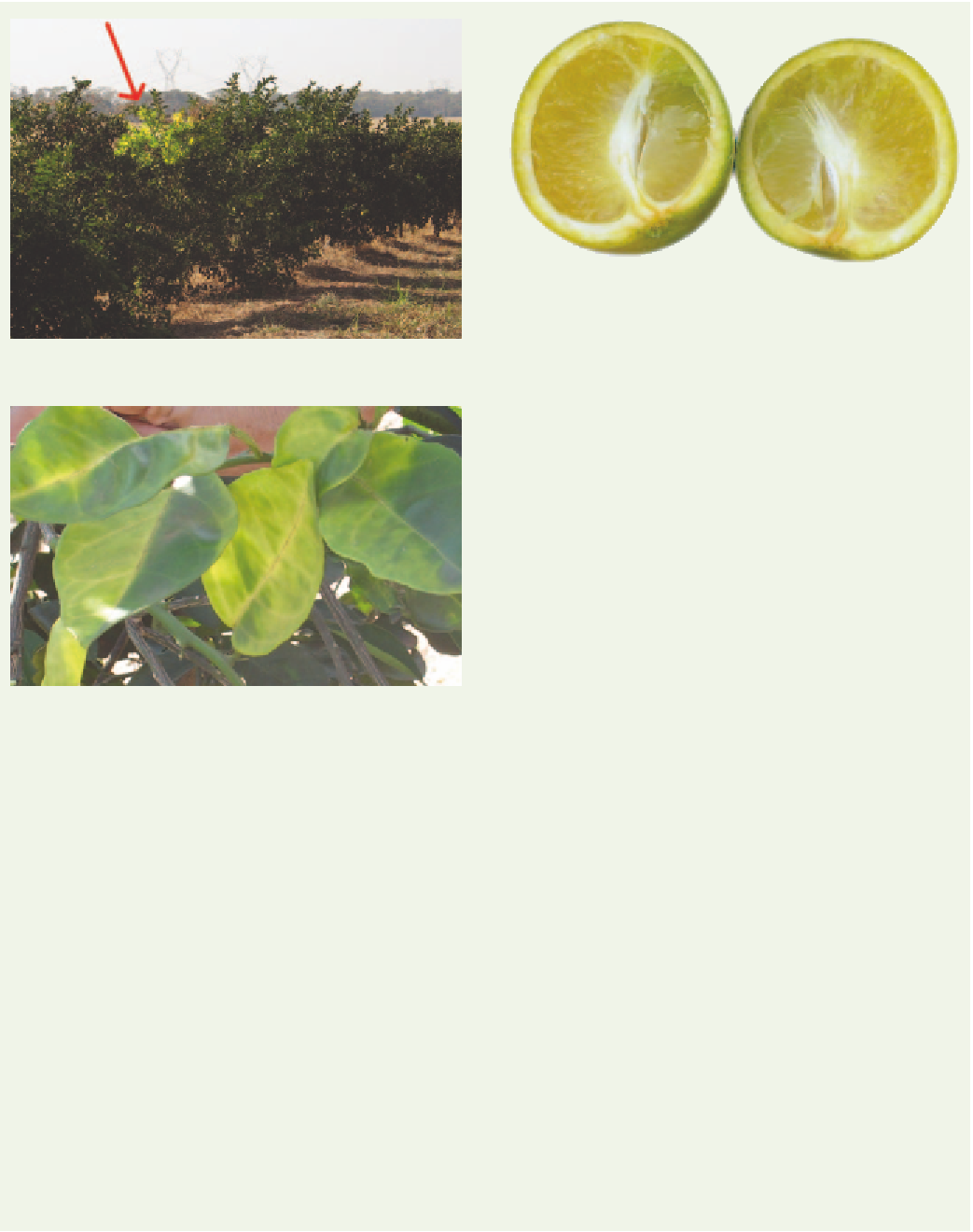Agriculture Reference
In-Depth Information
Fig 6.7 Lopsided fruit symptoms of huanglongbing. Note that affected
fruit are typically smaller and contain brown, shrunken seeds.
Fig 6.5 Yellow shoot symptom of huanglongbing. Note the distinct
yellow shoot in contrast with the otherwise healthy canopies.
Importance
Huanglongbing is considered to be the most
devastating disease of citrus worldwide. It has spread
extensively throughout the world, including parts of
North America, South America, Africa, Asia and the
Middle East. The life of citrus trees with
huanglongbing can be reduced to just five to eight
years, and trees may never produce marketable fruit.
Precise estimates of tree losses due to huanglongbing
worldwide are scant, but conservative estimates are
in the hundreds of millions of trees. The close
proximity of the disease in Papua New Guinea,
Indonesia, Vietnam, and the Philippines emphasises
the significance of the disease to the Australian
citrus industry.
The distribution of native Rutaceae species through
northern Australia and the length of the east coast
could provide a pathway for the movement of the
disease from these countries to the immediate north of
Australia, into most commercial citrus-growing areas.
Furthermore, common ornamental plants of the
Murraya
genus have been reported as hosts of the
vector and pathogen, adding domestic nurseries and
private gardens to the list of important potential entry
pathways.
Prevent huanglongbing outbreaks through strict
quarantine (this is the best means of management).
Fig 6.6 Asymmetric yellow mottling symptoms of huanglongbing.
Note the corky leaf midribs.
Fruit produced on affected trees generally fail to lose
their green colour at maturity, tend to be smaller in size
and lopsided in shape, contain aborted seeds, and have
a bitter f lavour to the juice. Huanglongbing could be
confused with Australian citrus dieback (phytoplasma
associated), which has similar symptoms (see the
section on Australian citrus dieback).
Source of infection and spread
The bacteria that cause huanglongbing are graft
transmissible, and are spread and transmitted by winged,
phloem-feeding psyllid insects.
Diaphorina citri
is the
vector of
Ca
. L. asiaticus and americanus, and
Tr i of z a
erytreae
the vector for
Ca
. L. africanus. Both vectors, like
the bacteria, are exotic to Australia. Long-distance spread
is generally through the movement of infected plant
material or plant material infested with psyllids. The
movement of infected psyllids by wind currents or
cyclones is also a potential form of long-distance spread.
What to do if you suspect huanglongbing/citrus
greening
This pathogen is a biosecurity risk to Australia. Check
for the vectors and symptoms of huanglongbing.
Report any suspicious symptoms to the relevant state
Department of Primary Industries or contact the Plant
Health Australia hotline on 1800 084 881.












